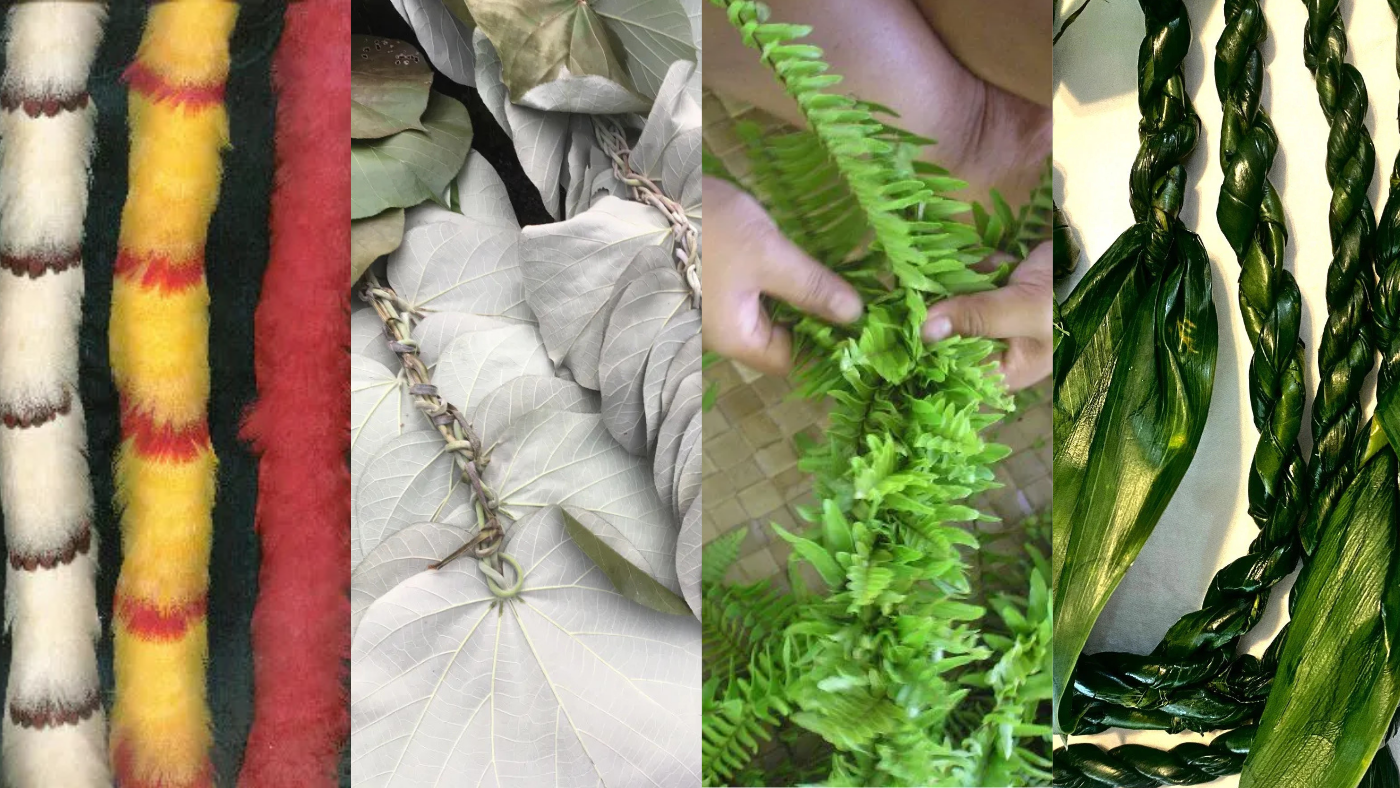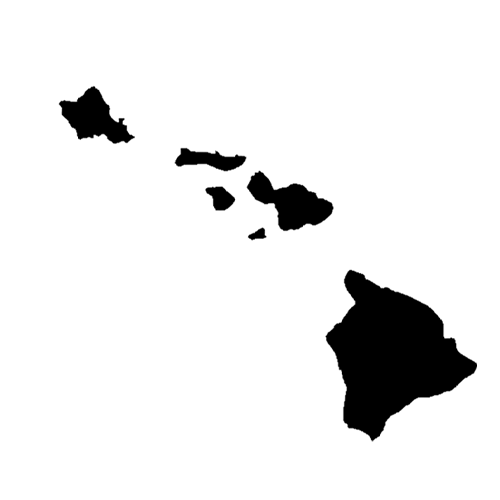TL;DR: Learn about the traditional Hawaiian practice of lei making. Made of various materials, lei making has become a symbol of love, admiration, and appreciation. Whether making a lei or receiving a lei, leis are reserved for all occasions, including birthdays, graduations, weddings, and more. There are so many different lei-making styles to learn about—from haku (braid) to wili (wind), there’s a lei for everyone to enjoy and cherish.
Lei making is a cherished practice deeply rooted in Hawaiian culture, symbolizing connection, love, and aloha. Traditionally crafted from a variety of natural materials such as flowers, leaves, seeds, shells, nuts, feathers, and even bones or teeth of animals, leis served as a form of adornment and distinction among ancient Hawaiians. Today, the practice of lei making has expanded, made with the utmost care, appreciation, admiration, and attention to detail; every step in the process, from thoughtfully gathering the materials to carefully stringing, braiding, or weaving them, is done with purpose and intention. Giving a lei is a meaningful gesture typically seen on special moments like birthdays, graduations, weddings, and anniversaries–but lei making is not subjective, and can be made for all occasions!
Lei Etiquette to Keep in Mind
- One should always accept a lei graciously
- A lei is worn draped over the shoulders, with strands falling in both the front and back
- When gifting a lei to a pregnant woman, it must remain open-ended (no closed or tied leis)
Types of Lei
Kui: “to string or pierce,” is one of the most recognizable methods of lei-making, where flowers are pierced with a needle and threaded with string to create a cascading effect. Popular flowers for kui lei include pīkake, plumeria, and puakenikeni. Image source
Haku: “to braid” or “to arrange,” often involves at least two types of plant materials (like flowers and leaves) that are woven together using a three-strand braid. The haku frequently gets mixed up with the lei poʻo–haku is the braiding technique, while lei poʻo translates to “head lei,” so any lei that is worn on the head. Image source.

Wili: “to wind,” involves wrapping flowers and foliage onto a base using twin, raffia, or lāʻī (ti leaves). Wili is known for its durability and versatility–great for incorporating different textures and colors. One might use ferns to hide the string, for that polished finish. Image source
Hili: “to braid,” but with only one type of material, such as ferns or ti leaves. Maile and Palapalai ferns are commonly used for hili lei due to their flexibility and fragrance. Image source

Humupapa or humu: “to sew,” flowers and foliage or sewn onto a backing of lāʻī (ti leaves), lau hala, or fabric using a needle and thread. Feather leis are a common example of a humupapa lei. Image source

Hīpuʻu/Nīpuʻu: “to knot,” involves tying stems together to form a chain. Kukui leaves are commonly used due to their strength and flexibility. Image source

Lei Hilo: twisting two pieces of lāʻī (ti leaves) together to form a rope. Typically, the leaves are softened by heating, boiling, or freezing before twisting. Lei hilo is a classic Hawaiian lei style that is strong and durable. Image source

Four Tips & Tricks
- Keep the lei cool and misted to make it last longer
- Add ferns or leaves to cover the string and enhance durability
- Choose fresh, flexible plant material
- You can soften lāʻī by heating, boiling, or freezing the leaves
Shop Local with Hawaiiverse
Shopping local with Hawaiiverse means directly supporting Hawai‘i’s small businesses, from local farmers to family-run shops. Hawaiiverse makes it easy to discover, uplift, and grow these businesses through exclusive deals and a directory rooted in community.
Here are some links to shopping some local lei-inspired items across the 808 state with Hawaiiverse:
- 3” Pua Kala White Flower, Matte Vinyl Sticker
- Recycled PET Beach Towel - Pakalana Lei
- Handstitched 6” Keychain Strap - Pua Lei
- Standard 12oz Can Coozie - Teal Pikake
- ʻIlima Flower Gold Enamel Pin
- Palapalai Hawaiian Fern Gold Enamel Pin
-
Deluxe Hawaiian Lei Shower Curtain & Bath Mat Set - White

Written by: Courtney Mann
Resources
https://www.ksbe.edu/article/na-ano-hana-lei-types-of-lei-making
https://hawaiiflowerlei.com/lei-history/
https://www.skylinehawaii.com/blog/what-it-means-to-receive-a-lei



